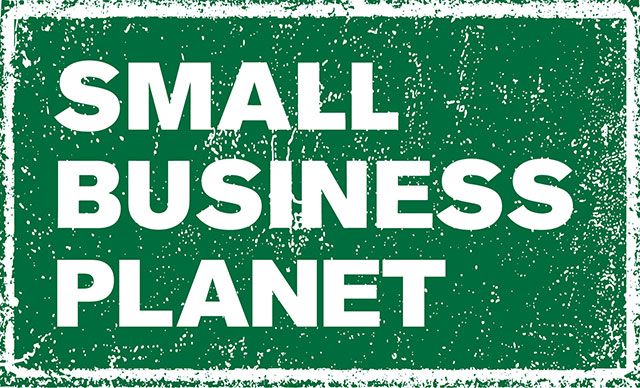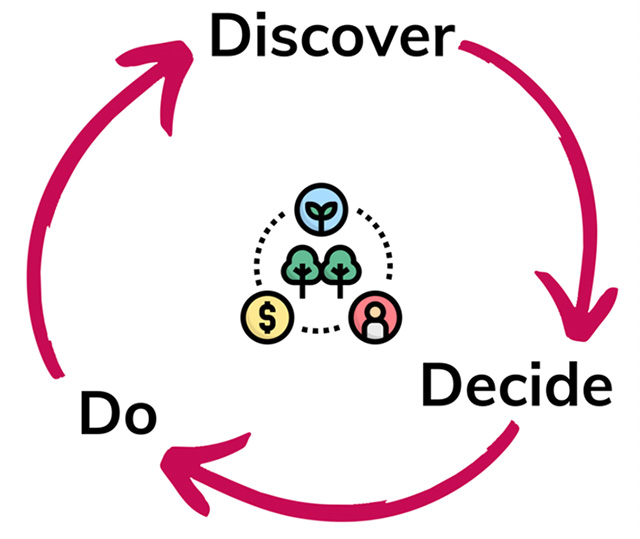
This article will walk you through a 3-step process to start making your business more sustainable, but before we get going let's look at these questions.
What is Sustainable Development?
Sustainable Development is development that meets the needs of the present (us), without compromising the ability of future generations (our children, grandchildren, etc.) to meet their own needs.
It is not a destination, but instead it is a journey of constant changes all with the purpose of improving our ability to live and work on this planet.
Why do we need to develop sustainably?
As we all know, we're in the midst of climate, ecological, biodiversity, social and economic crises and as a generation (and cross-generations) we have an opportunity to begin solving them. If we don't, quite frankly it will be too late.
So, what is a sustainable business?
Let's start by stating what a sustainable business is not. It is not a business that creates profit, while creating problems for people and the planet.
Instead, a sustainable business is one that does well by doing good and solves problems for people and the planet, while generating a profit. An example of a small business which does this well could be Elvis and Kresse, which makes luxury accessories made from reclaimed materials (mainly fire hoses).
How do you begin your journey to making your business more sustainable?
Being honest, sustainability is complex (that is the bad news). The good news is the following three-step process will break it down into clear steps so you can make your business more sustainable with ease.
Step 1 - Discover:
Discovering your here and now means understanding the impact your business has on society (people), the environment (planet) and the economy (how you create value, positive impact, and profit).
Sustainable development is not a tick box exercise or a destination, instead it is a constant journey of decisions, changes and turns. Therefore, discovering your here and now is like creating a roadmap to guide you. Skipping this phase and jumping straight into finding solutions is a bit like getting on a plane (or preferably a train) without knowing where it's going. You might end up sipping frozen margaritas in a beach hut watching the sun set, or you might end up somewhere you don't like; having wasted your time, hard-earned cash, and motivation.
So how do you discover your here and now?
Just like creating a list of important things to pack for your holiday, when preparing to start your sustainable journey you need a checklist of the areas your business has an impact to discover where you are doing well and where you could improve.
In the industry this is often referred to as a materiality assessment, impact assessment or sustainability key performance indicators (KPIs). In a nutshell, it's a range of things you must consider to develop a more sustainable business.
Discovering your impact on People:
Social sustainability is about recognising and acting on the impacts, both positive and negative, your business has on people. These impacts can either be direct or indirect; direct impacts are those you have on employees and customers, while indirect impacts consider those you have on people in your supply chain and on the local community.
To make your business sustainable, it is important to recognise where you are having a positive impact and to maintain that, while also identifying where you need to improve your impact on people.
Here are some questions you could ask yourself to get you thinking about your social impacts:
Use this scale to help you answer them:
Answer each of the questions by giving your business a score from 1 to 3 and write down the reasons why you have given that score.
- Leading in your field - "we're going beyond best practice"
- Standard practice - "we're complying with regulations"
- Unsustainable - "we're currently doing nothing to address this"
Community Impact:
- What involvement does your business have within the local community? For example, through charity projects, organising events, etc.
Supply Chain:
- How do you check your supply chain for child labour and modern slavery?
Customer Service:
- How do you measure and improve the quality of your customer service?
Employees:
- How do you ensure employees feel safe to voice ideas, questions, challenges, and concerns?
Discovering your impact on the Planet:
Environmental sustainability is about developing a balanced relationship with the earth and its natural resources and understanding that we (humans and our businesses) rely on the services the planet provides to survive and thrive.
To do that we must reduce the greenhouse gas emissions associated with our business, find ways to create value from 'waste', reduce our use of natural resources, reduce, and substitute the use of plastics and other damaging materials for bio-based alternatives, improve our impact on biodiversity and reduce our consumption of water. The following questions will help you begin to think about these areas of impact:
Again, use this scale to help you answer them:
Answer each of the questions by giving your business a score from 1 to 3 and write down the reasons why you have given that score.
- Leading in your field - "we're going beyond best practice"
- Standard practice - "we're complying with regulations"
- Unsustainable - "we're currently doing nothing to address this"
Supply Chain:
- How do you reduce the amount of natural and non-natural materials you use within your business's operations?
Consumption:
- How do you check your supply chain for environmental performance both positive and negative?
- How do you re-use 'waste' materials within your business?
Net-zero emissions:
- What is your approach to reducing your emissions to achieve net-zero?
Water consumption:
- How do you monitor and manage water discharge from your operations?
- What initiatives do you have in place to reduce water consumption?
Biodiversity:
- What do you do to improve your impact on local biodiversity?
So, what about profit?
Profit is slightly different because it is the outcome of what you do and how you do things as a business. Therefore, becoming a sustainable business is largely about identifying opportunities to create profit over the long-term by improving your impact on people and the planet.
For example, if you identify from the 'people questions' above that you have little involvement in your community then getting involved in more local community events will improve your brand reputation, awareness, lead to more business opportunities and untimely financial profit.
Alternatively, reducing the amount of packaging you use, reducing your water consumption or buying an electric bike (through a government loan scheme) to cycle to work will also allow you to improve your impact on the planet and profit.
Therefore, the question in this section to ask yourself is:
- If you knew you could create value and profit by turning an area of negative impact (on people and/or planet) into an area of positive impact, what might you do?
Step 2 - Decide:
Okay, so you have begun to discover how your small business impacts people and the planet. Now it's time to decide your next steps towards making your business more sustainable. It's unlikely you'll be able to make all the changes you need at once and overnight, but you can start to take small steps towards improving current areas of negative impact.
To do this, write down your areas of impact into two columns: celebrations (positive impacts) and developments (negative impacts) as seen below.
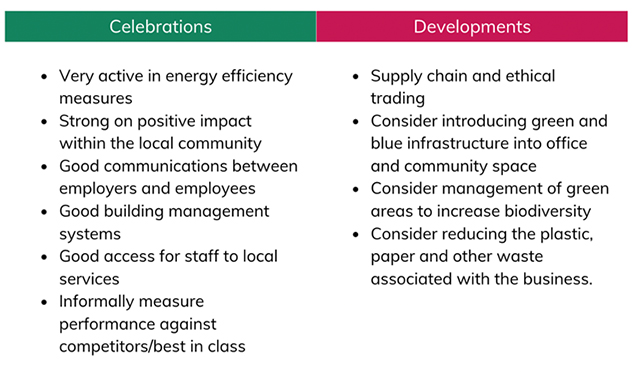
In the development's column, decide on one thing you are going to begin working on to make positive changes and then focus on that. So, for example, if you run a small coffee shop it could be to reduce your waste production by eliminating single-use cups. It's important to remember that just because you are focussing on one issue does not mean it will not have a positive impact elsewhere. For example, eliminating or seriously reducing the sales of single-use cups can also positively impact the CO2 emissions associated with your business, your impact on biodiversity, the water consumed in creating them and the cleanliness of your local community.
Once you have decided which step to take towards making your business more sustainable, it's time to cross the threshold and do something about it.
Step 3: Do
You have discovered your here and now, you've decided which small step to take and now you are ready to do something about it. As this step indicates, it is about rolling up your sleeves and taking action to find 'new ways of doing things' to create a positive impact on people, planet and profit. Here you can use your own creative thinking skills, talk to customers, other business owners or specialist who will all help you generate ideas.
Let's continue the theme of a small coffee shop (we'll call it Bob's coffee shop) and use an example which is based on a true story. After discovering their here and now, Bob's coffee shop realised they were contributing to local waste and litter through the sale of their coffee in single-use cups. They decided their next step would be to seriously reduce and eventually eliminate the sale of coffee in single-use cups by influencing the behaviour of their customers.
They got creative and came up with solutions to do something about it. They spent the first month collecting as many used coffee cups as possible that had been littered in the local community. After one month, they put all the used coffee cups on their shop floor to highlight the scale of the issue to their customers. Customers buying coffee with their own re-usable cups would receive a discount, while customers buying coffee in a disposable cup would have to make their way through the 'walk of shame.'
This simple action can have multiple benefits, for example: it educates people on the problem and encourages them to change their behaviour; if you sustain your efforts, it reduces and eventually eliminates the use of disposable cups which can improve your profit margins; and it highlights rivals in the area who are doing nothing about this issue, encouraging sustainably minded people to choose your shop instead. And even those who are 'non-sustainably' minded, as the coffee is just as nice but cheaper!
This is just one example of how by discovering your impact and deciding to do something, you can become a more sustainable business - one half step at a time. After all, "a journey of a thousand miles begins with a single step."
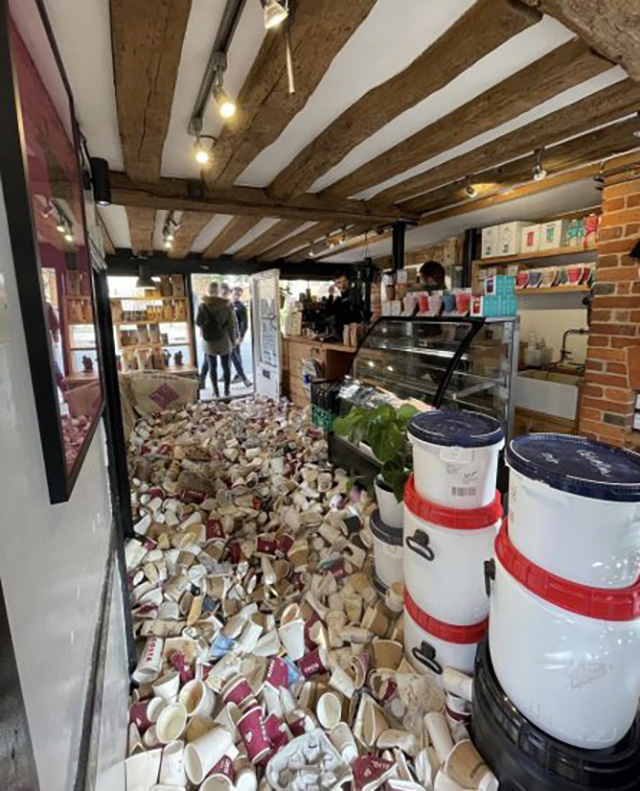
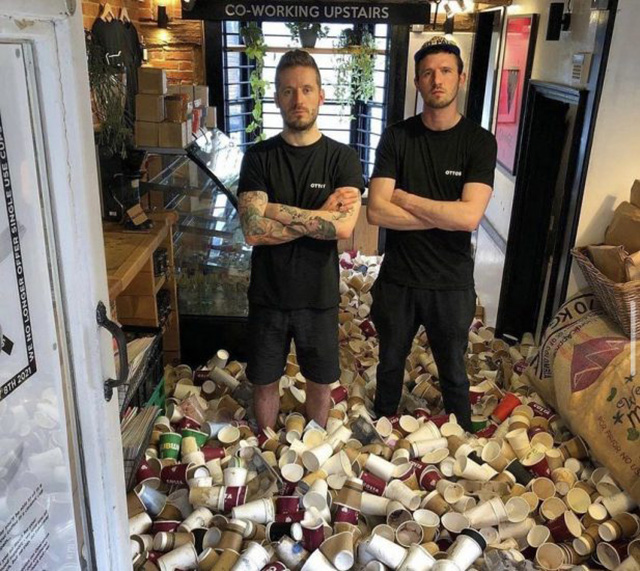
Example based on the action from Otto's Coffee Shop.
Here are some resources you can use to begin discovering your impact:
- B-Impact Assessment - A free tool to measure your impact on workers, the community, the environment, and your customers.
- Sustainable Pathways - 10 questions to help SMEs begin their sustainable path.
- Small 99 Carbon Calculator - A free tool with simple, non-technical questions that will create your carbon impact assessment.
Published: 16 October 2021
